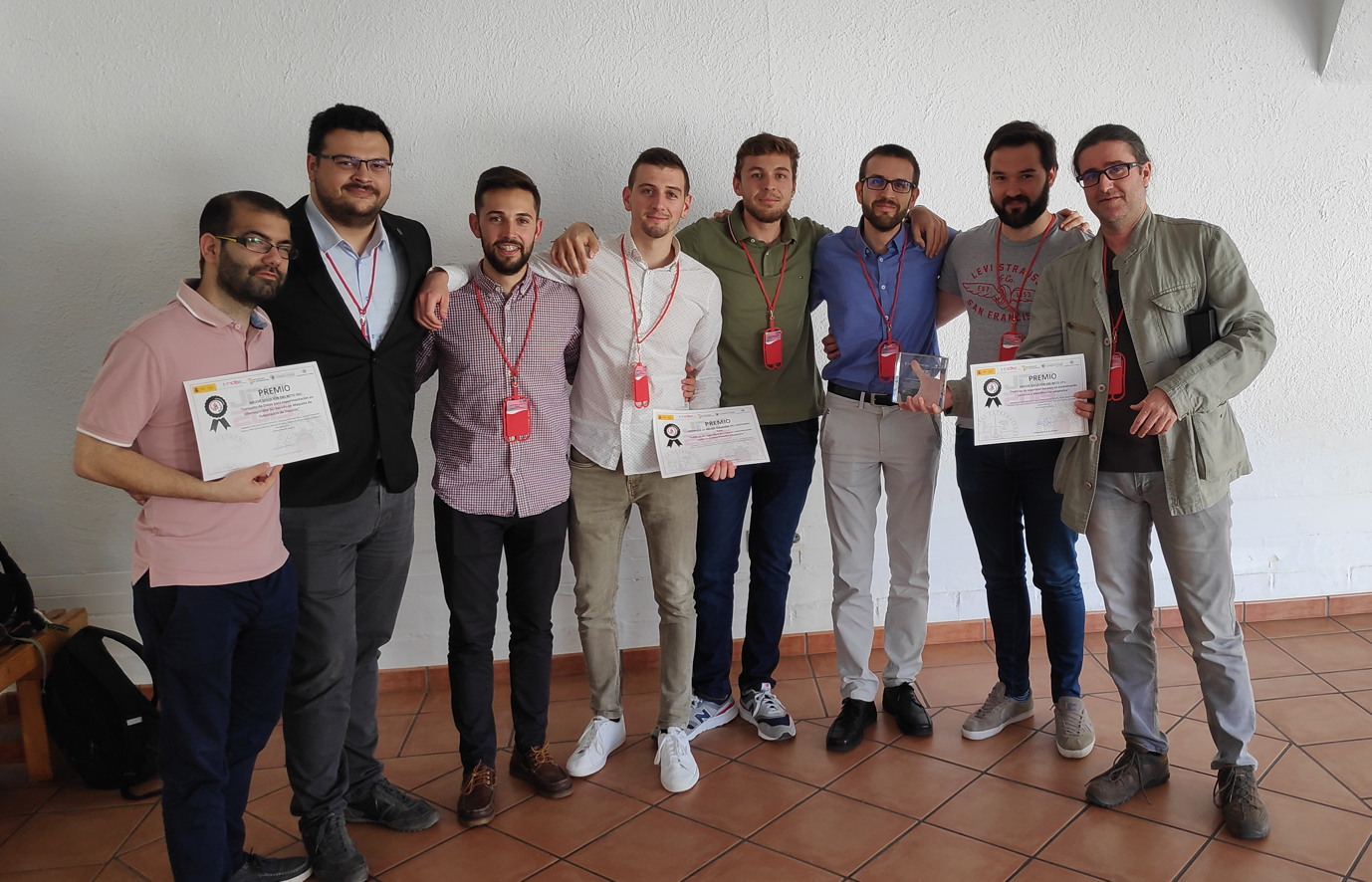TSSG present an ICT Architecture for Grid Voltage Control
Tags:
Photo left to right Niall Grant, TSSG, Sean McGuinness, EPRI, Fiona Williams, Ericsson and RE-SERVE Project Manager, Ronan Murphy, ESBN, Brian Carroll, ESB eCars, Jonathan Sandham, ESBN, Miguel Ponce de Leon, TSSG
ESB Networks hosted a H2020 RE-SERVE project open day May 15th in Dublin, Ireland, and the TSSG were there to demonstrate and present an ICT architecture for voltage control which significantly helps with grid stability in a world of 100% renewable resources.
The EU has set an ambitious goal of at least 32% Renewable Energy Sources (RES) to be feeding the grid by 2030 in Europe. This installation of RES as a distributed energy resource affects the fundamentals of grid operation and forces a rethink of the basics of grid control and automation. This is the challenge which H2020 RESERVE addresses.
Having high RES penetration means there must be a systems approach to ensuring that the grid is stable with much less rotational inertia being provided by large synchronous generators. There is a need in identifying and implementing harmonised network codes and the provision of a communication infrastructure supporting near-real-time services with high reliability.
It is in the area of communication infrastructure supporting near-real-time services that the TSSG excel and through the RESERVE project, the team at WIT have helped to develop and deploy an innovative voltage control approach to ensure system stability in the field.
During the conference hosted by ESB Networks, Mr. Niall Grant of the TSSG, presented the primary requirements for the approach, in that software had to be developed to implement the advanced voltage control technique and secure communications had to be put in place between the software and various DER devices.
This approach has included brand new 5G-enabled communications infrastructure from Ericsson, a voltage control algorithm from UCD and a novel software ICT approach to provide the voltage grid stability service towards field trials in Ireland, from a battery storage facility in Cork, a solar panel array in Laois and the very first vehicle-to-gird (V2G) device which is deployed in Dublin.
Niall presented the voltage control execution service which can be hosted on a central cloud server and manages all DER devices, or as an alternative the execution service can be hosted on a Raspberry Pi that is directly connected to a single DER device, or finally the execution service can be hosted on a compute node connected to a 5G communications tower.
Niall pointed out that the flexibility of the ICT architecture approach means that many different utility telemetry protocols can be connected to the voltage control execution service while still maintaining the necessary latency, availability, resilience and security of the grid service.
Performance characteristics of the new voltage control mechanisms have been investigated through the integration of grid simulations and live 5G wireless communications as hardware in the loop, and a research paper on the results have been submitted to international conference for review.
]]>




